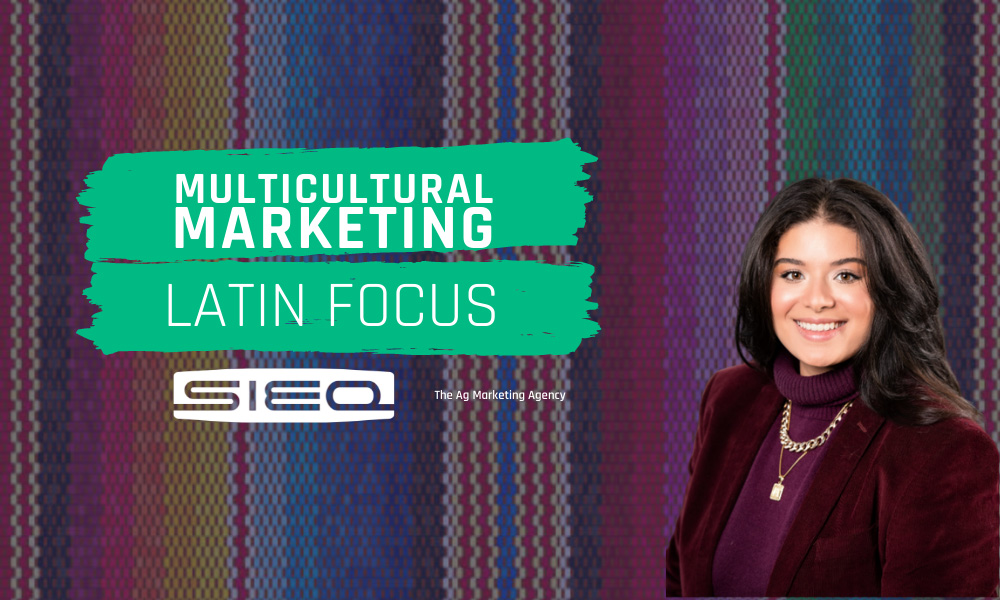Multicultural Marketing: Latin Focus

My name is Ariela Faulkner, and I am a natural born Salvadoran woman in marketing. I fall into a niche category within my own demographic group– I was not born in the U.S., but I was raised here as a young child. The U.S. is the only home of which I know and remember. This gives me a unique experience. This allows me to see the world from the perspective of immigrants– their plights, sacrifices, and successes. I also get to see the world from the perspective of Americans. There are lots of issues surrounding immigration– and we are not here to tackle those. The point of this series is to highlight the melting pot this wonderful country is, and how to service all those beautiful flavors. Each group requires a different attention, and it’s our job as marketers to ensure we appeal to the interests of each person. After all that’s what great marketing is all about.
Today I attended AdWeek's Elevate: Hispanic TV 2022 Thought Leadership panel. Obviously, the Latin community is very near and dear to me, so finding ways to strategize Hispanic advertising is crucial. Across the board Hispanic marketing has been either overlooked, underserved, or oversimplified.
Latinos/LatinX groups comprise 2.7 trillion dollars of buying power. They're no longer (and haven't been for years) a group that can be bundled into a general marketing plan.
A main theme from this panel was - A Nuanced Approach. The Latin community is diverse, like any other community, but the pride attached to each cultural identity makes this granular approach necessary. It requires deep dives into research and an understanding of the history and origin of these communities -- the journey they took to get here, and the reasons they've chosen to stay in specific locations.
What does this mean for media platforms and their effectiveness? Younger Latin audiences lean towards digital consumption, however this doesn't rule out traditional media in any way. Hispanics often live in multigenerational households. Each generation or each level of a person's integration within the U.S. identifies their media watching preferences. Traditional TV is not just a means to serve the elder or un-acculturated populations of Latinos/xs. It hits the younger audiences as well, the ones who watch telenovelas with their mom or abuelita. So traditional media is the way to let Latin audiences know that they're important to your brands, but digital media is the way for you to impact this group and personalize ads to their identities and values.
The main strategizing takeaway is don't silo your Latin audiences by serving them Spanish ads only. The demographics are so versatile and the Latin community is YOUNG! The median age for Latinos/xs is 10 years younger than the US population's median of 37 yrs. This data along with other data support the fact that the population of acculturated Latinos/xs are in the majority of the Latin community. They don't just need ads in Spanish. They need representation. They are looking for a reason to buy from your brands because your brands see them and include them.
A fantastic example of the type of marketing that directly impacts the Latin community is a blended acculturated approach. A great example of this is what the NFL and Telemundo did for a Super Bowl LVI commercial. See here. This unification of fútbol and football is a revolutionary marketing strategy created to increase Hispanic viewership of traditional American sports. Telemundo and the NFL's partnership proved to be incredibly effective as the Super Bowl had a total viewership (people who tuned in to watch some of the Super Bowl) of 208M, and had a 100% viewing rate of 112.3M, up 14% from last year.
What was the difference? Latin Inclusion. What was done? Telemundo provided coverage of the Super Bowl for the first time ever, giving Latins an option to watch this monumental American event in Spanish or English-- and not just a dubbed version - a coverage with professional sportscasters. Additionally, to prime their audiences, a sneak peek of Telemundo's commercial was provided through NBC news outlets. The commercial was made to unify these groups with their love of sports. You'll note the ad is not technically in Spanish, and lacks a versatile script but has cultural influences of Spanish sport culture, and a sprinkle of Hispanic context blended with traditional American practices.
How do we apply these marketing tactics to different areas within the companies?
Specifically, how is this marketing relevant within the agricultural community? Stay tuned for another series of tips in Multicultural Marketing - Latin Focus.


